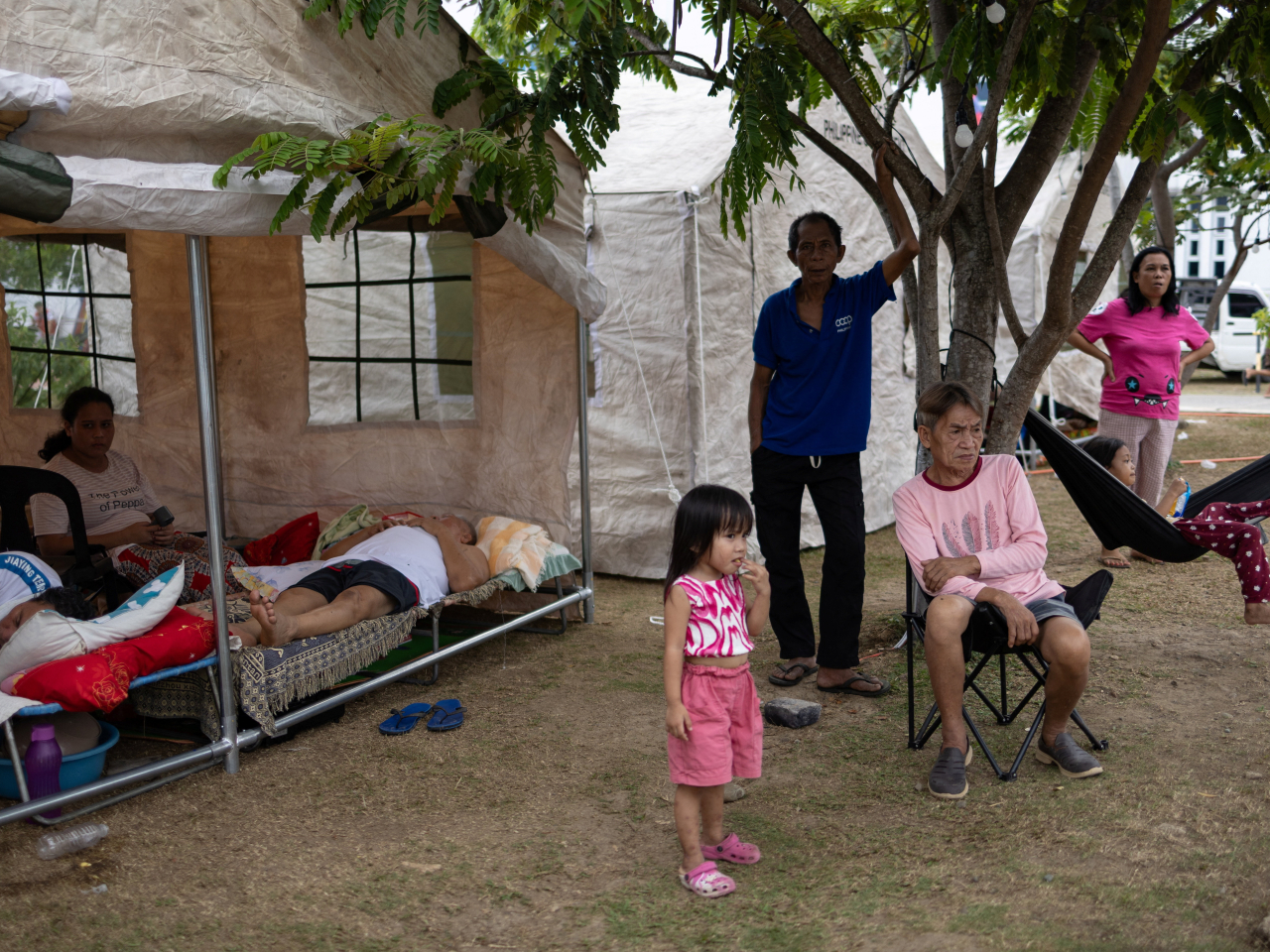Dazed survivors of a pair of major earthquakes in the southern Philippines awoke on Saturday to scenes of devastation, after hundreds of aftershocks rocked the region overnight.
Many coastal residents of Mindanao island had slept outdoors, fearful of being crushed to death in the midst of aftershocks of the 7.4- and 6.7-magnitude quakes that struck off the coast within hours of each other on Friday.
Philippine authorities said at least eight people were killed.
Officials described damage to roads, bridges, schools and other public infrastructure as "minimal" but have yet to determine how many people lost their homes.
In Manay, a Mindanao municipality of 40,000 residents, people were removing debris and sweeping up broken glass from homes and other buildings on Saturday.
"Our small house and our small store were destroyed," resident Ven Lupogan said. "We have nowhere to sleep. There's no electricity. We have nothing to eat."
The destruction came less than two weeks after a 6.9-magnitude quake struck the central Philippine island of Cebu, killing 75 people and wrecking about 72,000 houses.
"We're going to give everything that we can provide to the province and municipalities that were affected," Public Works Minister Vince Dizon said during a visit to Manay's heavily damaged government hospital.
Patients lay on beds outside waiting for treatment after having been wheeled out on Friday because government engineers said the building had been structurally compromised.
Some people in Manay had spent the night in tents, under improvised tarps and hammocks, inside vehicles, and on mats laid out in parks or the sides of streets as aftershocks rippled across the region of 1.8 million people.
Vilma Lagnayo scrambled to save her family's clothes and belongings from their collapsed home in Manay, a town with poor coastal communities that rely on coconut farming and fishing.
"Reconstructing [our home] is difficult now... Money is a problem," Lagnayo said.
In Mati, about two hours' drive southwest along the coast, Margarita Mulle and her relatives held a wake for her older sister who had earlier died from disease, even as neighbours stayed away after tsunami warnings that have since been lifted.
"In case something happens, they {relatives] will carry the body using a 'tora-tora'," a tearful Mulle said, using a local term for a hand tractor-drawn cart that is a major mode of transport in rural areas of the south. (AFP)





